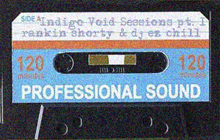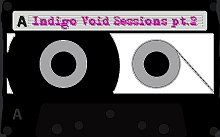
This is the 3rd time we investigate new eurorack modules developed by Dutch designers. Previously we checked out Das Ding's Baby 8 and we had a quick look at Jan Willem's Ginko Synthese (an in-depth review of his Sampleslicer coming soon on Dubbhism). But right now we have Falafular on the brain. And yes, there's a falafel-connection.
Mr. Falafular
Niels Kloet is a professional sound engineer, musician and generally speaking he's very much into modular synthesis. Niels performs regularly in the Netherlands as Falafel Biels and he's a core member of Team Noodlebar, alongside Mr. Mono-Poly and Danny ~ Das Ding ~ Bosten. About 1,5 year ago, he started to sell small amounts of homemade pcb's for eurorack modules. The first kit he developed was actually a matrix mixer design by CGS. After this project things started to roll. He got an appetite for more Falafular, and right now he's selling 6 modules of his own design as kits.
Quad Patternizer Deluxe
The Quad Patternizer Deluxe is perhaps the most intriguing Falafular module. It's a clock divider, but with a twist. Don't expect anything like the (soon to be updated) Doepfer A-160 or the 4ms clock dividers. It's closer to the Blue Lantern CMOS Clock Divider. The Patternizer is basically a tool for pattern sequencing, or think of it as an experimental drum computer, optimized for live performance.
The video pretty much demonstrates what the Quad Patternizer does, but one important button is actually not featured in it: at the bottom of each clock-channel there's a 'reset' button/input. Pushing this button or firing a trigger into the input changes the starting point of the 16-clock loop one tick at a time. Nice!
If you want to create rhythmic patterns in a modular environment you have lots of options, like the classic step sequencers, grid-based 'trigger matrix' drum sequencers, the relatively new euclidean sequencers or even high tech digital pattern generators like Grids by Mutable Instruments. But the most nerdy approach would be to use raw clocks, triggers and gates, massaged by clock dividers, and spiked with some logic, switches, comparators etc.
For this hardcore, experimental kind of rhythm-making the Quad Patternizer is a very user-friendly and ergonomic choice. The big buttons, and the clear functionality of each element of the user interface make experimenting with rhythm a lot of fun. You get both quick results and unexpected results. For strange loops, send some gate/trigger signals to the individual inputs above the buttons. Actually you can feed almost any kind of signal in there; a comparator will try to make sense of what is going on.

Niels has gone through 5 iterations of the module. Safe to say that it's finished. Mechanically it's solid, the buttons are high quality, and the perpex front works fine (but don't screw it in too tight).
Here's a track featuring the Quad Patternizer on rhythm...
Add some klix and beats
The other Falafular kits work fine as stand-alone modules, but it's obvious that they were designed as companions for the Quad Patternizer. The Bunch-a-Klix, a new design (based on the simpler Bunch-a-Klox) is shown below. It has a clock input, 4 clocks out, inverted clock outputs and NAND/NOR logic outputs.

And moving further upstream, we need some sound so we can actually hear what the Patternizer is doing to all these klox. Why not go for the most classic drum sounds in the history of electronic music? Falafular is offering clones of the 808 kick, 808 snare and 808 hihat. If this doesn't sound like a very original idea, keep in mind that even here, the Falafular design philosophy is at work.

First: these are not 'dumb' clones. There are many ways to copy a circuit, but if you are going to copy only a small part of a bigger circuit (in this case the complete 808 circuitry) you have to be very careful to make sure the 'stand alone' end result will actually sound like the 'embedded' original! This resulted in all kinds of tweaks for the trigger input, the level of the sound etc.
And second: Falafular modules are designed with ergonomics in mind. So you get a manual trigger with a nice big button as well. But for modules like the 808-clones there's only one final judge: your ears.
You can order Falafular 808 kits at Synthcube. You can check out Falafel Biels on YouTube or mail Niels to check availability of kits.
West Coast Design Philosophy?
If you are still reading, you're probably a modular synth buff. No problem. Here's a final thought just for you: you've probably heard about the west coast vs. east coast debate. If you haven't, go check it out on Muff Wiggler. And now let's add a new chapter to this silly debate: let's call it the Dutch West Coast Design Philosophy (DWCDP).
What is the Dutch West Coast Design Philosophy?
Thanks for asking. This design philosophy is about simplicity, ergonomics and designing modules with live-on-stage-use in mind. Here's the evidence: Das Ding's Baby-8 step sequencer, and the Falafular modules and Ginko Synthese modules are all designed on the Dutch West Coast. So that's where the name comes from.
Also, these designers crawl out of their labs on a regular basis to perform live on stage with their systems. So the modules are shaped and refined by the experience of playing live. This results in a balance between simplicity, ergonomics and versatility.
Of course there are more designers of modular synths living on the Dutch West Coast, like Rob Hordijk of Benjolin fame. But while the Benjolin fits very nicely into the DWCDP-scheme, these modules are a bit more 'classic'. So this is where the 'debate' could start... ;-)
OK, you're probably wondering by now why we need this Dutch West Coast category. Maybe to point out that the current trend of complex digital modules like the Cylonix Shapeshifter the Mutable Instruments Braids, the Tiptop Audio Trigger Riot and the Expert Sleepers Disting isn't the only way to go. Especially if you want to take it to the stage.

100% Dutch West Coast
















